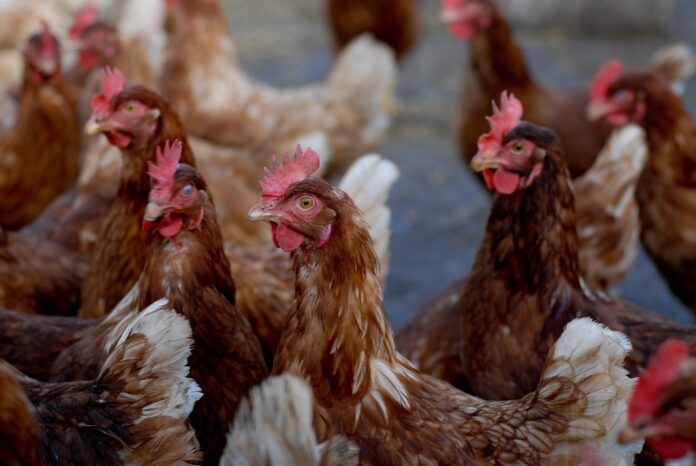It’s been just over a year since the first case of highly pathogenic avian influenza was detected in domestic poultry in Pennsylvania.
That first positive case was announced April 16, 2022, in a commercial flock of 1.4 million egg laying chickens in Lancaster County, in the south central part of the state. The positive case came two months into what’s become the deadliest bird flu outbreak in U.S. history.
Since then, more than 4.6 million birds have been killed in Pennsylvania as a result of the bird flu. Across the country, more than 58 million birds have been killed. While some have died as a result of the disease, most were culled as a preventative measure to stop the spread.
After a brief lull in the winter, the bird flu hit Pennsylvania farms earlier than expected this year, with the first case being reported on Jan. 30, said Gov. Josh Shapiro, at a recent press conference. The mild winter caused wild birds that naturally carry the fatal disease to migrate sooner. There have been 32 cases in Pennsylvania in 2023.
The last positive case in Pennsylvania was more than a month ago, as of press time, but this wave of bird flu served as a reminder that this bird flu outbreak isn’t over yet and farmers, backyard poultry keepers and residents need to remain vigilant.
“Farmers need to take the steps necessary to implement biosecurity measures as quickly and effectively as possible, even if you just keep some birds in your backyard,” Shapiro said, at a March press conference update on the highly pathogenic avian influenza.
Overall impact
More than 58 million domestic birds in 47 states have been killed as a result of the bird flu since the first case was detected last February.
It’s the deadliest outbreak of bird flu since an outbreak in 2014-15 killed more than 50 million birds. That outbreak lasted about six months.
This current outbreak has entered its second year and positive cases continue to come up every few days. The last case was detected on April 14.
Avian influenza viruses occur naturally and are ever-present in wild birds that spread the virus in their droppings and wherever they land. These bird flus are highly contagious and often fatal to domestic birds.
The bird flu has been blamed for soaring egg prices, which was on average $4.25 per dozen in December, according to the U.S. Department of Agriculture. To compare, eggs were $1.79 per dozen in December 2021.
Prices have already dropped and will likely continue to drop as the nation’s overall egg laying flock recovers from last year’s losses. The average price per dozen was $3.24, according to the most recent USDA egg market report.
State impact
Since the start of this outbreak, 31 commercial flocks and 36 backyard flocks have been hit by the bird flu in Pennsylvania. Most cases have been in and around Lancaster, where most of the state’s commercial poultry operations are located.
The state led the country in positive cases in March, which led several states to temporarily block poultry shipments from Pennsylvania. The last case detected in Pennsylvania was on March 17. Four farms were still under surveillance, as of April 18.
Pennsylvania devoted $25 million in its budget last year to compensate farmers and integrators for losses suffered from the outbreak not covered by the USDA. Of that, $8.2 million has been distributed to farmers, Shapiro said. The budget also included $6 million for testing and diagnostic services. Shapiro’s budget proposal this year re-ups all of that money.
While the state is doing its part to help farmers through this bird flu outbreak, Shapiro urged people to do what they can to help. He said the data shows smaller backyard flocks are being infected at a higher rate than large commercial flocks.
Ohio has also been hit hard by the disease, by the number of birds impacted, but the state has had far fewer flocks hit. In all, more than 3.7 million birds have died in Ohio, most of which came from a commercial flock containing 3.7 million egg laying chickens. There have also been eight positive cases in backyard flocks in Ohio in total, ranging in size from 8 to 640 birds.
One case was reported this year in Ohio, at a backyard flock in Licking County, on Jan. 18.
West Virginia is one of three states that has not had any cases of bird flu in domestic poultry during this outbreak.
(Reporter Rachel Wagoner can be reached at 724-201-1544 or rachel@farmanddairy.com.)











